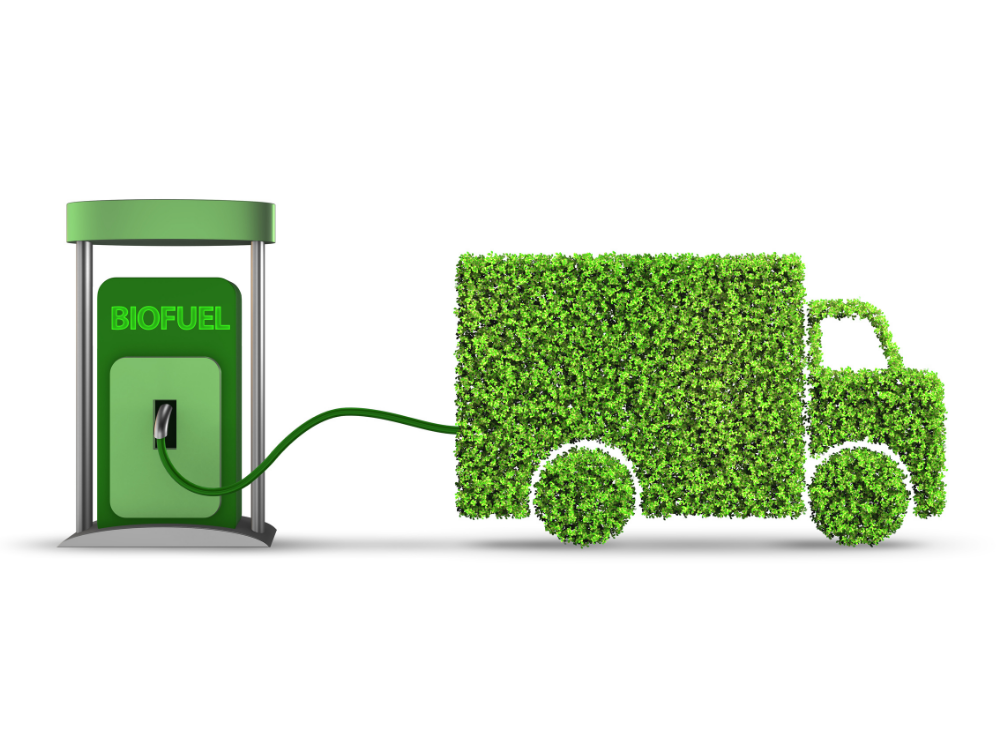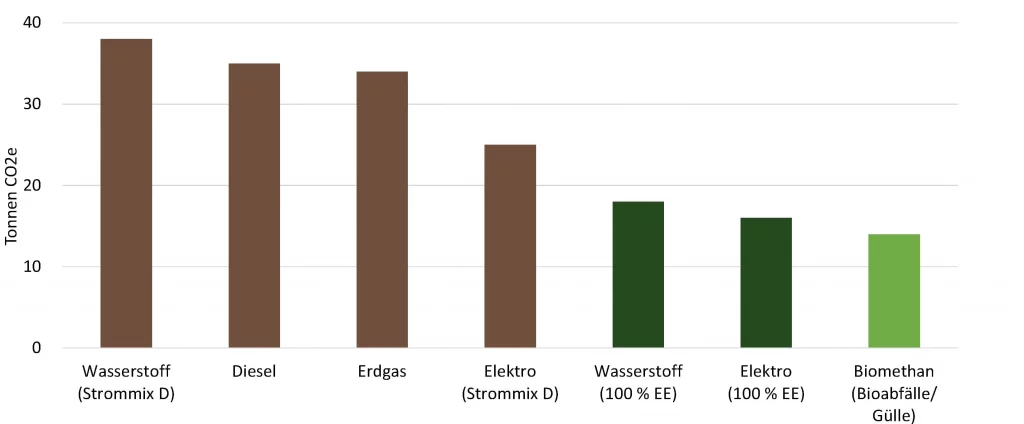Electric or hydrogen as drivers for climate-neutral mobility? Among others. agriportance, however, focuses on the alternative fuel biomethane for a variety of reasons.
Biomethane is produced from organic residues, manure or slurry. Farmers prepare biomethane from the biogas of a biogas plant, which consists of about 60 % of methane and 40 % of CO2 exists. In the Biomethane processing takes place a separation of CO2 takes place. The producer can then market the biomethane as a fuel at filling stations. Biomethane can be used as a green natural gas substitute and is conditioned to CNG (gaseous) or LNG (liquid) quality.

Biomethane nearly climate neutral
A major advantage of biomethane is that itthat the drive type is almost climate-neutral. Trucks or cars powered by biomethane can reduce CO2e emissions compared with diesel by over 90 %. This makes biomethane one of the most attractive fuels for climate-neutral mobility on the market. Especially when considering the climate emissions of electric or hydrogen cars, whose fuel was produced by the electricity mix Germany, it becomes clear that biomethane is currently the most interesting alternative for climate-conscious car or truck drivers. But biomethane is not only an interesting fuel in terms of climate emissions; it can also score in other areas.
Biomethane is cheaper than other renewable forms of propulsion
Producing biomethane as a fuel is generally more expensive than obtaining fossil natural gas, while natural gas has significantly higher climate emissions. Users can easily fuel biomethane as a fuel in natural gas cars. A biomethane car is cheaper to purchase than an electric car, mainly due to the high price of the battery in the electric car. According to this, biomethane can keep up with diesel or natural gas drives because of the price. The argument that green drive technologies are significantly more expensive than fossil fuels can therefore be refuted in the case of biomethane.

Biomethane has an existing charging and vehicle infrastructure
The green fuel biomethane is used as a natural gas substitute. This is practical because there is already an existing charging and vehicle infrastructure for CNG (compressed natural gas) and LNG (liquid natural gas) with almost 900 natural gas filling stations across Germany. Accordingly, a biomethane/natural gas mixture forms the perfect bridging technology for a rationally driven mobility turnaround. Liquefied biomethane (LNG) is interesting for trucks because of its high energy density: even for a 40-ton truck, driving distances of 1500 km are possible with an LNG tank. Once the tank is empty, biomethane vehicles can be refueled at the same speed as vehicles running on gasoline or diesel.
Biomethane: the sustainable alternative to fossil fuels
For the production of electric cars, rare earths such as dysprosium or neodymium are required for the manufacture of batteries, as well as other elements such as lithium or cobalt. As a rule, these elements are in short supply and also have problematic suppliers, such as China in the case of rare earths or the Congo in the case of cobalt. This can lead to geopolitical conflicts and dependencies - because currently about 2/3 of the production of rare earths comes from China. Often, mining standards are low for both workers and the environment. Another problem is the disposal or recycling of the batteries. The situation is completely different with biomethane - with a regional and sustainable biomethane production there are no dangers of dependency and Effects for the environment not.
Electromobility and hydrogen propulsion have their raison d'être for good reasons, but biomethane can score points in various areas. The renewable fuel can especially play to its strengths in the following types of vehicles: Heavy-duty, marine, aviation, and agricultural. This is because biomethane propulsion does not require a heavy battery, which can quickly weigh nine tons for a 40-ton truck. The other advantages of biomethane are summarized below:
- Biomethane is nearly climate neutral, producing more than 90 % fewer climate emissions
- A biomethane car or truck is less expensive than other renewable forms of propulsion
- Biomethane has an existing charging/ and vehicle infrastructure due to compatibility with natural gas
- The disposal of problematic batteries does not exist with biomethane
